Product-Led Growth (PLG) is quickly becoming a popular strategy for small businesses and startups looking to scale efficiently and sustainably. Instead of relying on traditional sales tactics, PLG model focuses on using the product itself to drive user acquisition, retention, and growth.
In fact, according to the 2024 B2B SaaS Benchmark Report, PLG companies in the top quartile allocate 63% of their revenue to Research and Development (R&D), compared to 45% in Sales-Led Growth companies.
The main idea behind PLG is simple: by making the product easy to use, valuable, and user-centric, customers are naturally drawn to it. They see the product’s value upfront, without needing heavy sales involvement. This approach helps reduce costs, boost customer satisfaction, and ultimately, drive long-term growth.
Let’s explore 12 simple product led marketing strategies that you need to adapt to fuel your businesses growth. These strategies are focused on optimizing user experience, leveraging data, and continuously improving your product.
12 PLG Marketing Strategies You Should Adapt to Fuel Your Business Growth
Building a successful business with a product-led growth (PLG) framework is more achievable than ever. By focusing on the product as the main driver of growth, businesses can reduce costs, engage users, and scale quickly. PLG marketing strategies ensure that users see value in your product from the start, driving adoption and retention naturally.
1. Prioritize User Onboarding
Onboarding sets the tone for a user’s entire experience with your product. A great onboarding process makes users feel confident, reduces confusion, and shows the product’s value immediately.
Take Slack as an example. When a new user signs up, Slack walks them through setting up their workspace, inviting teammates, and exploring essential features. This intuitive process ensures users can start collaborating right away.
To reduce friction, focus on:
- Interactive Tutorials: Guide users step-by-step as they explore the product.
- Quick Wins: Help users achieve their first success quickly, such as completing a task or exploring a key feature.
- Contextual Help: Provide tips and in-app support to solve questions instantly.
According to a recent survey, 86% of users are likely to stick with a product after a positive onboarding experience. A smooth onboarding process can lead to higher retention rates, directly impacting the success of your PLG marketing strategy.
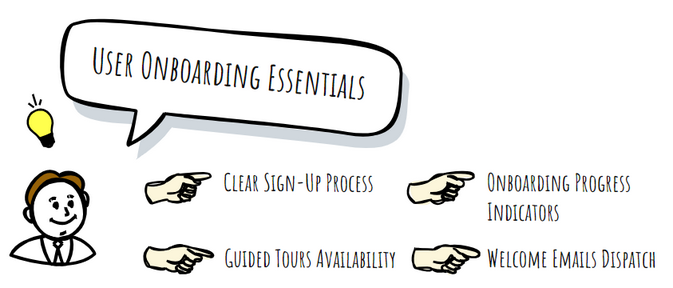
2. Build a Self-Serve Model
Today’s users prefer independence. A self-serve model empowers them to explore and use your product without needing constant help. This approach not only increases adoption but also reduces support costs, making it a key aspect of product-led marketing. For small businesses, a self-serve model can significantly reduce the need for large customer support teams, freeing up resources to focus on product development.
To build an effective self-serve model:
- Make Navigation Easy: Ensure users can find features and complete tasks without confusion.
- Offer a Knowledge Base: Provide FAQs, video tutorials, or guides for users who need help.
- Design for Independence: Eliminate unnecessary steps or dependencies that slow users down.
Self-service models can reduce labor costs by up to 30% by implementing chatbots etc., They also help users feel more in control, increasing satisfaction and retention. By empowering users, you turn your product into a growth engine and solidify the foundation for your PLG marketing strategy.
3. Offer Freemium or Free Trial Options
Giving users a chance to experience your product at no cost is one of the most effective ways to drive adoption. A freemium model or free trial reduces the risk for users and allows them to understand the product’s value before committing to a paid plan. This strategy is a cornerstone of product led marketing.
Dropbox is a great example. It offers free storage space to users, allowing them to test the platform’s file-sharing capabilities. Once users run out of free space, they can easily upgrade to a paid plan. This approach has been instrumental in Dropbox’s viral growth, as satisfied users often invite others to join.
To implement freemium or trial options effectively:
- Define Clear Limits: Offer core features for free but set boundaries (e.g., usage limits or restricted features).
- Make Upgrading Simple: Use clear prompts to show the value of premium features and offer a seamless upgrade path.
- Demonstrate Value Quickly: Ensure users experience the product’s core benefits within the first few days.
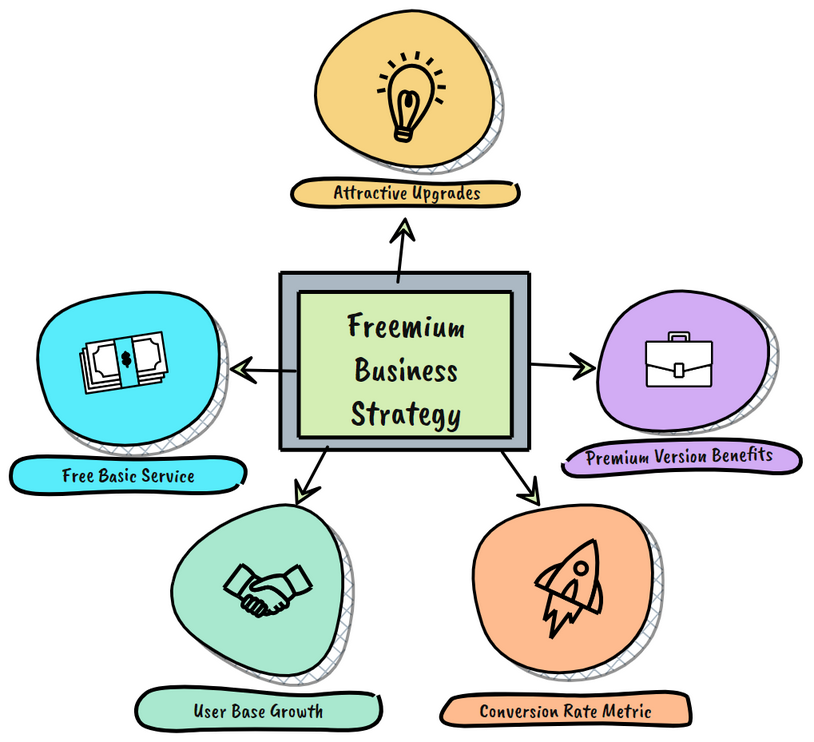
Freemium models attract more users by removing barriers to entry. By creating a risk-free entry point, you encourage adoption while driving long-term growth through upgrades.
4. Focus on Product Usability and Design
Your product’s usability and design can make or break your growth strategy. A product that’s simple, intuitive, and visually appealing keeps users engaged and encourages them to come back.
Start by putting yourself in the user’s shoes. Is your product easy to navigate? Does it solve problems without confusion? Every feature and design choice should aim to make the user’s experience as smooth as possible.
How to improve usability and design:
- Simplify Navigation: Ensure users can find what they need in just a few clicks. A clutter-free interface reduces frustration.
- Prioritize Speed: Optimize loading times and eliminate delays. Fast interactions improve satisfaction.
- Iterate Constantly: Use feedback to refine your design and address user pain points.
When users feel comfortable with a product, they spend more time exploring it. This engagement is key to product led marketing because satisfied users are more likely to share their positive experience with others.
Usability is not just a design task; it’s a growth strategy. By making the product enjoyable and effortless to use, you’re creating a foundation for long-term loyalty and organic growth.
5. Use Data to Drive Decisions
Data is your best friend when it comes to refining your PLG strategy. By tracking user behavior, you can make informed decisions that drive product improvements and growth. This is where data-driven decision-making becomes essential in a product led marketing approach.
Key steps to leverage data effectively:
- Track User Behavior: Use analytics tools to monitor how users interact with your product. What features are they using most? Where do they drop off?
- Measure Key Metrics: Regularly track KPIs like activation rates, churn rates, and customer lifetime value (CLV). These insights help you assess your product’s effectiveness.
- Test and Iterate: Use A/B testing to evaluate changes and new features. Constantly improve based on real data, not guesswork.
A product-led business thrives on understanding its users. By gathering insights into their behavior, you can continuously improve the product and meet their needs more effectively.
According to McKinsey, data-driven companies are 23 times more likely to acquire customers and more likely to retain them. Using data to guide decisions not only enhances the user experience but also optimizes your growth strategy over time.
6. Enable Viral Loops
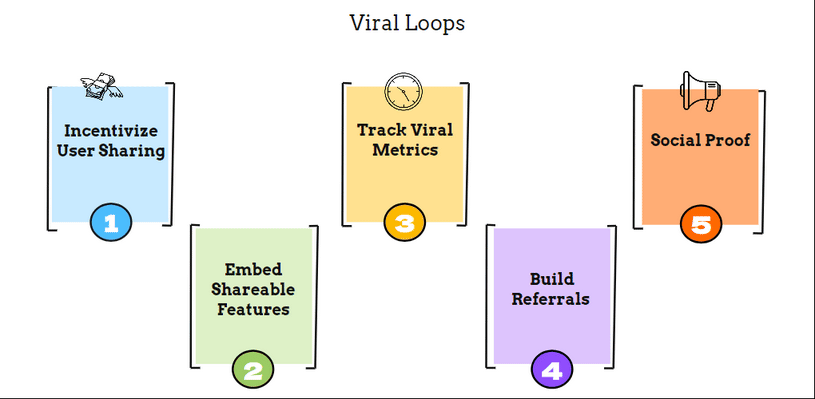
Viral loops can accelerate growth by encouraging users to spread the word about your product. By designing your product to encourage sharing and referrals, you create a cycle that brings in new users and keeps the growth engine running smoothly.
How to create effective viral loops:
- Incentivize Sharing: Offer rewards, discounts, or additional features to users who invite others.
- Build Referrals into the Product: Make it easy for users to share content, features, or the product itself with their network.
- Highlight Social Proof: Display user testimonials, reviews, or usage stats to encourage new users to sign up.
In a PLG model, word-of-mouth marketing plays a major role. By designing features that encourage sharing and referrals, you tap into your existing user base to fuel new customer acquisition.
Referred customers have a retention rate up to 37% than acquired through other media. This shows just how effective these viral loops can be in growing your business.
Encouraging users to share your product doesn’t just expand your reach; it also builds a community around your brand. The more people talk about your product, the more others will want to try it.
7. Focus on Customer Success
In a PLG model, customer success is about ensuring users get the most out of your product. By offering proactive support and engaging with users, you increase satisfaction, reduce churn, and boost long-term retention.
Steps to prioritize customer success:
- Proactive Support: Don’t wait for users to come to you with issues. Reach out with helpful tips and resources that guide them to success.
- Onboarding and Education: Continuously educate users on how to get the best results from your product through tutorials, webinars, or in-app messages.
- Feedback Loops: Use feedback from users to refine your product and resolve pain points, making users feel valued and heard.
Satisfied customers are more likely to become loyal advocates, sharing their positive experiences with others. This increases organic growth, making your product marketing even more effective. A well-supported customer is a loyal one, and they will often help you grow faster than any marketing campaign could.
Customer success isn’t just about fixing issues. It’s about creating an experience that turns first-time users into long-term advocates.
8. Build Product Features That Solve Real Problems
To make your product stand out in a competitive market, it’s essential to build features that solve real, tangible problems for your users. Focus on addressing customer pain points directly, and the rest will follow.
Think about it like this: Imagine you’re a small business owner struggling to manage multiple client communications. You’re using emails, spreadsheets, and phone calls, but everything feels disconnected. Now, think about a product that integrates all these communications in one place, automating key tasks and simplifying follow-ups. That’s not just a solution—it’s a game-changer for small businesses looking to save time and stay organized.
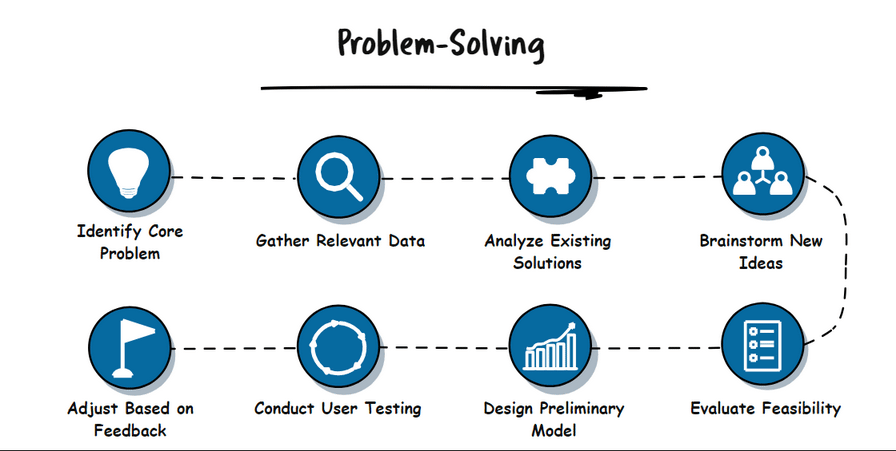
How to identify and build problem-solving features:
- Talk to Your Users: Ask them what challenges they face. Listen to their frustrations and identify patterns.
- Focus on Simplicity: Make sure the feature is easy to use and doesn’t overcomplicate things.
- Prioritize Impact: Focus on features that will deliver the most value to the most users.
For example, imagine a project management tool. Adding a feature that allows users to track tasks across teams easily can be incredibly valuable for collaboration. But make it easy—nobody wants to get lost in complicated processes.
Building features that directly address user problems doesn’t just improve satisfaction; it builds trust and loyalty. It’s how you transform casual users into passionate advocates. When users feel your product is genuinely solving their issues, they’ll keep coming back and tell others about it.
9. Implement In-App Messaging and Alerts
In-app messaging and alerts are powerful tools to engage users directly within the product. They help guide users, highlight important features, and encourage actions that drive growth. In a PLG strategy, timely and relevant messaging can significantly improve user experience and retention.
Think about how HubSpot uses in-app messaging to guide users through new features. As a user navigates the platform, HubSpot sends subtle messages introducing them to features they might not have explored yet. These messages often include quick tips or helpful tutorials to make the most of the tool. This proactive approach enhances user experience without overwhelming the user.
How to use in-app messaging and alerts effectively:
- Personalize Messages: Use user data to send tailored suggestions based on their activity.
- Timing is Key: Send messages at the right moment—don’t bombard users when they’re trying to get things done.
- Focus on Value: Keep messages focused on providing value, whether that’s helping the user complete a task or highlighting a new feature.
For example, if a user has been inactive for a while, a gentle reminder about the features they haven’t used yet can reignite interest. According to Zendesk, 60% of users appreciate receiving helpful notifications during their experience.
10. Align Sales and Marketing with the Product
In a product-led growth (PLG) strategy, it’s crucial that your sales and marketing teams work hand-in-hand with the product team. Everyone must be aligned to promote the same value proposition and ensure the product speaks for itself. For small businesses, aligning sales and marketing with the product ensures that every team member understands the core value proposition which is crucial when operating with smaller teams.
Take Zoom as an example. In the early days, Zoom’s marketing emphasized how easy it was to use. Their sales team used the product themselves, making it easier for them to understand and communicate its value. This alignment between marketing, sales, and the product helped Zoom grow rapidly.
How to align your teams:
- Clear Messaging: Ensure that both sales and marketing communicate the same key product benefits and user success stories.
- Product Knowledge: Provide sales teams with in-depth product training, so they understand the features that resonate with potential customers.
- Feedback Loops: Sales teams can share customer feedback with product teams to improve user experience and address pain points.
When your sales and marketing teams are closely aligned with the product, they can drive more meaningful conversations, provide better support, and turn prospects into loyal customers faster. A unified approach strengthens your PLG strategy and accelerates growth.
11. Create Community Engagement
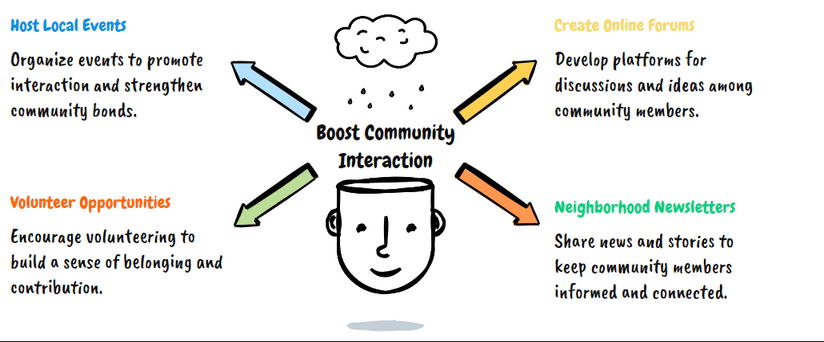
Building a strong community around your product not only increases brand loyalty but also drives growth. A connected, engaged user base becomes your most powerful marketing tool, turning users into advocates.
Take GitHub as an example. GitHub has a vibrant community of developers who share code, solve problems, and contribute to open-source projects. This community-driven approach has made GitHub more than just a product; it’s a hub for developers to collaborate and learn. As a result, it attracts new users and helps retain existing ones.
How to foster community engagement:
- Create Spaces for Users to Connect: Establish forums, online groups, or even social media pages where users can interact.
- Encourage User-Generated Content: Ask users to share their experiences, tips, or creative uses of your product.
- Host Events or Webinars: Organize virtual meetups or educational webinars to connect users and build a sense of community.
Community-driven growth is key for long-term success. Users who feel connected to your brand and fellow users are more likely to recommend your product and help it grow. Building a strong community around your product is a strategic way to drive word-of-mouth marketing.
12. Use Continuous Improvement to Drive Growth
To stay ahead in a competitive market, constant improvement is non-negotiable. In a product-led growth (PLG) strategy, your product must evolve with user needs. Regular updates and new features show that you’re committed to providing value, which in turn keeps users engaged and attracts new ones.
The key is to treat your product as a living, breathing entity. Keep refining, adding new functionalities, and responding quickly to user feedback.
How to make continuous improvement work for your business:
- Listen to Your Users: Collect feedback through surveys, reviews, or customer support interactions. Use this data to prioritize improvements.
- Release Incremental Updates: Instead of waiting for major updates, roll out smaller changes frequently. This keeps the product fresh and users engaged.
- Monitor Key Metrics: Track usage patterns, feature adoption, and customer behavior to identify areas for improvement.
Conclusion
Building a successful business with Product-Led Growth is all about putting the product at the center of your strategy. The 12 strategies we’ve covered, from prioritizing user onboarding to continuous improvement, help create a strong foundation for growth. By focusing on user experience, data-driven decisions, and customer success, you can keep your product evolving and your users engaged.
For startups and small businesses, PLG offers a unique opportunity to scale efficiently with limited resources by focusing on what matters most, delivering value through your product. Implementing these strategies will lead to long-term success, helping you compete with larger players in your industry.
When your product works for your users, the growth follows naturally. It’s time to take action and start adopting PLG in your marketing strategy. The sooner you begin, the sooner you’ll see the benefits. Start today and watch your business grow.